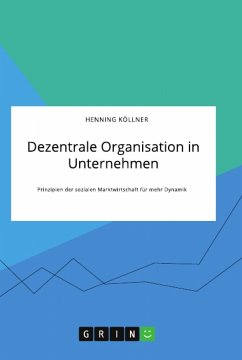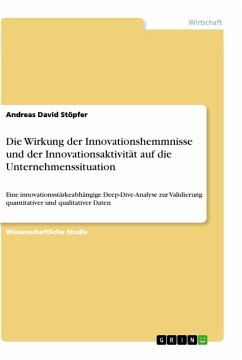Diplomarbeit aus dem Jahr 2011 im Fachbereich BWL - Unternehmensführung, Management, Organisation, Note: 1,0, Leopold-Franzens-Universität Innsbruck (Institut für Strategisches Management, Marketing und Tourismus), Sprache: Deutsch, Abstract: The motivation of this study is to determine if and why agile organisations are better off in times of crises, what are they doing strategically different that influences their development in a positive way. The author gives a scientific definition of strategic agility as: "The strategic proactive adaptation to ever-changing circumstances through correct anticipation of future tides of events on the basis of systematic perception of the current situation, as target-oriented operation under pressure of time." Ongoing from that strategical term of agility, the organisation structure and leadership of an agile organisation will be analysed.The main results are that strategically agile organisations seem to have an agile strategy, an organical-network-structure and a decentred leadership, called agile Leadership.Die Motivation des Autors ist es eine Definition von Agilität im wirtschaftlichen Sinn zu geben mit welcher, das strategische und taktische Vorgehen agiler Unternehmen speziell in Krisenzeiten und innerhalb von volatilen Märkten erklärt werden kann. Aufbauend auf diese Definition wird im weiteren Verlauf die Organisationsstruktur von agilen Unternehmen beleuchtet. Als letzter Punkt wird die Führung agiler Unternehmen besprochen und ein Ausblick auf zukunftsfähige Varianten des strategischen Leadership gegeben.Diese Arbeit bildet eine theoretische Grundlage für allfällige spätere praktische Untersuchungen. Die Definition welche für Agilität gegeben wird lautet: Die strategisch proaktive Adaptation an unvermittelt veränderte Verhältnisse, durch richtige Antizipation zukünftiger Ereignisse, anhand gezielter Perzeption der gegenwärtigen Situation, als zielgerichtete Handlung unter zeitlichem Druck. Hierauf aufbauend wird ermittelt, dass agile Unternehmen anhand von drei Kriterien charakterisiert werden können, erstens strategische Agilität, zweitens organisch dezentrale Netzwerkorganisation und drittens agiles Leadership.








